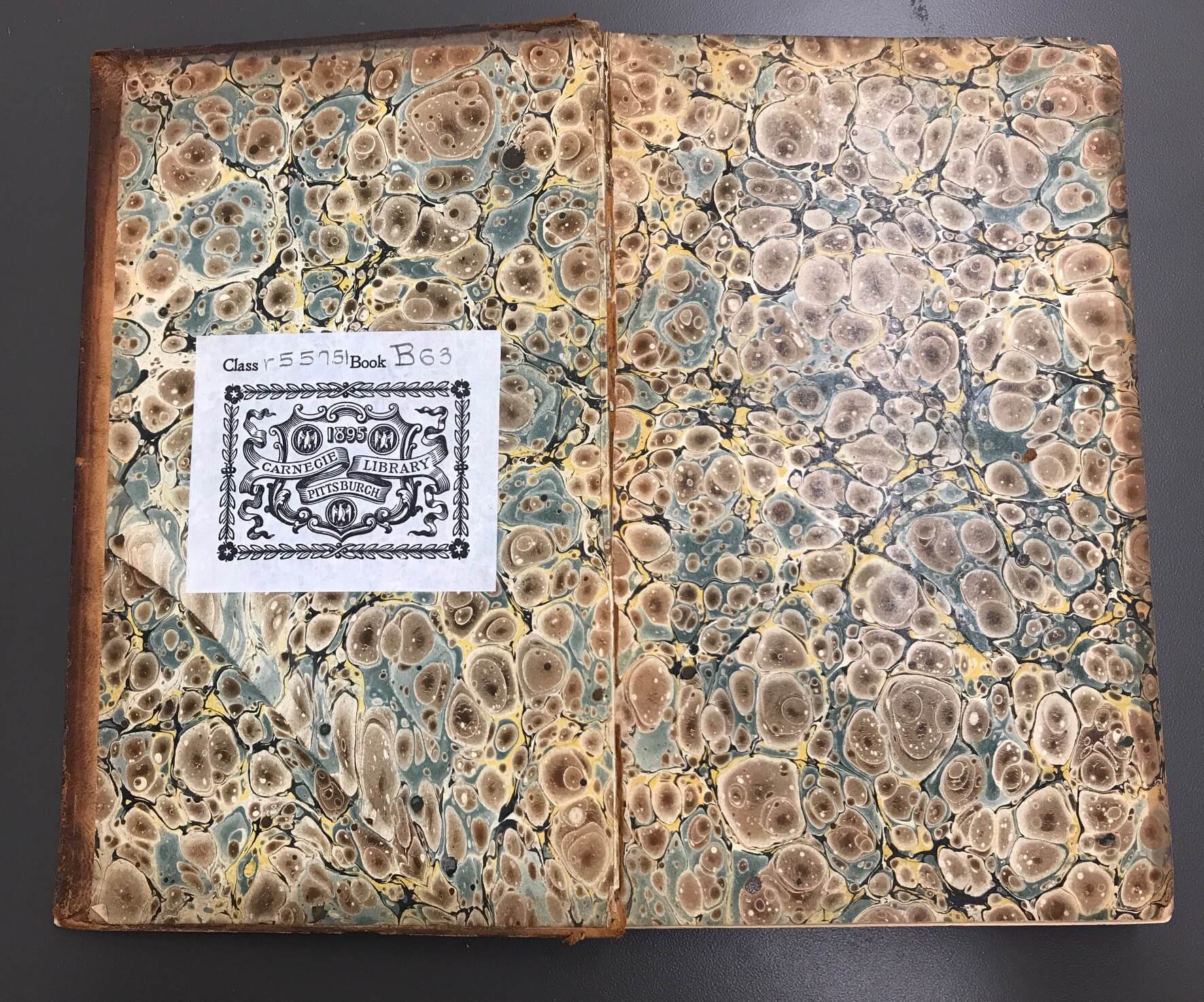Back in the good ‘ol days of the 19th and 20th century, we decorated the inside covers of our beloved books with wildly colorful papers. Swirls, speckles, wavy lines and crinkled patterns were all used by book binders to ease the transition of a reader’s eyes from the cover of the book to the meat of the book, the textblock. This transition sometimes was decorated, relative to the context of the book. A book about trains might have had some engines merrily chugging across the flyleaf. Other books might have had plain white endsheets, and others wild, splashy, psychedelic colorful swirls.
So why were some books decorated with marbled papers, and others not?
Why did the bookbinder decide to use certain patterns for certain books?
Did the content of the book affect the design choices??
Well, let’s take a look at some of the books in the library collection and see what we can find…
Scene 1: Meet your friendly, neighborhood Endsheet
First we have to introduce the body part of a book, that is the subject of today’s discussion: THE ENDPAPER
Wait, I thought you said ENDSHEET?
Well, yes those terms are interchangeable, endpapers and endsheets both refer to the paper that you find on the very very first page of a book. No, not “Page 1” but the very first thing you see when you open the cover, that piece of paper that is adhered to the back of the front cover of a book.
Endsheets travel in pairs, or appear to be traveling in pairs, when really, most endsheets are one loooong piece of paper stretched across the book.

Why does my book need to have ENDSHEETS?
Case-bound books need to have endsheets, because that piece of paper helps to hold the textblock securely in the front and back book covers (known as the book case). They keep the textblock safe inside the case, fitting nice and snuggly, so that the case is giving the textblock a nice big hug. If endsheets are broken, the textblock is wobbly, or falls out of the case while you try to use it. One repair that we do in the Preservation Department is replace old, worn endsheets with fresh new ones….
Scene 2. The Collection Line-up
What is marbled paper?
Paper marbling is a method of aqueous surface design which produces patterns similar to stone marble. The patterns are created by color floated on either plain water or size and then transferred to the surface of a sheet of paper. Let’s take a look at some different types of marbled end sheets….
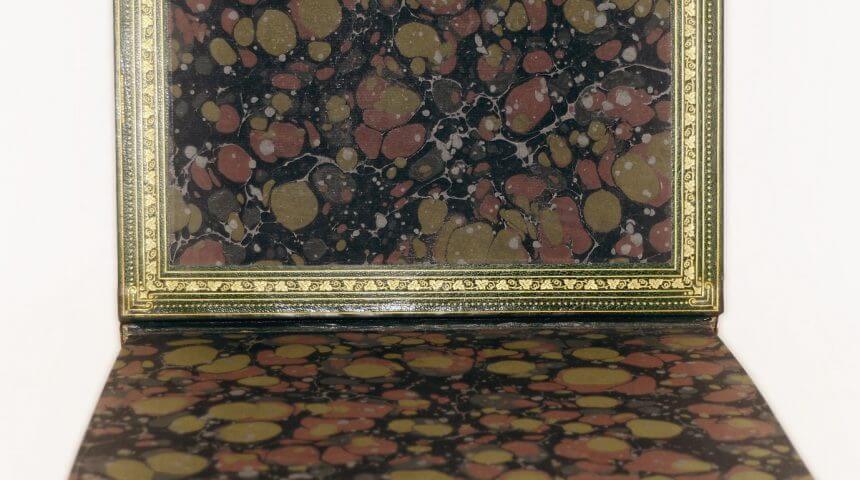
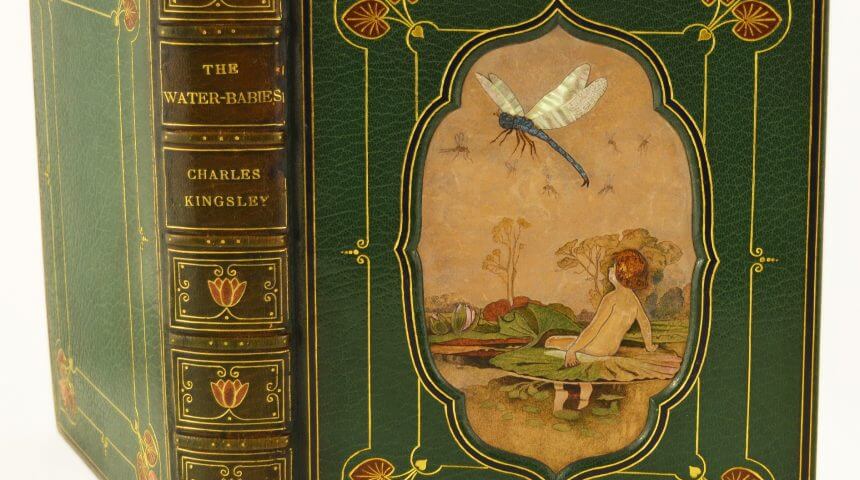
A Turkish (spot or stone) pattern decorates the flyleaf, and is also used in a doublure in this copy of “The Waterbabies” from the Oliver Room special collections. With the nature of this style of binding (fine binding) the time and effort spent to make this leather case & to perform the meticulous gold tooling, it is safe to assume the marbled paper in this book was carefully selected. A conscience choice was made here to make this whole binding, a cohesive, elegant package for the story within.
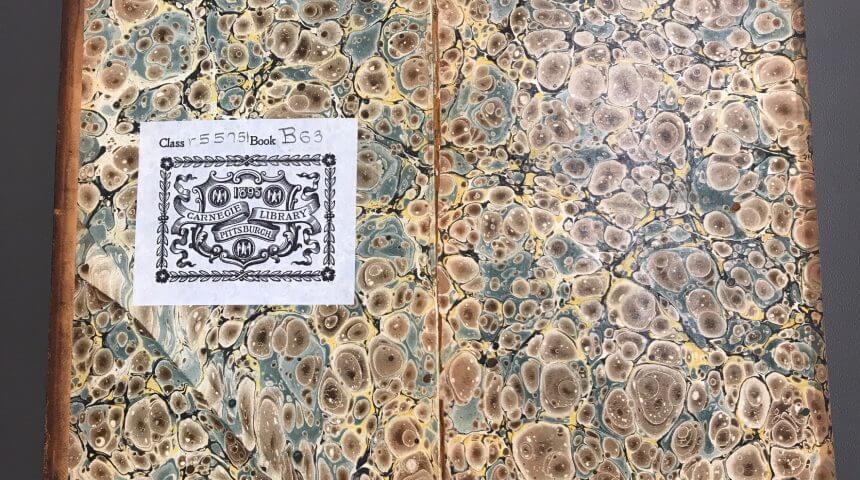
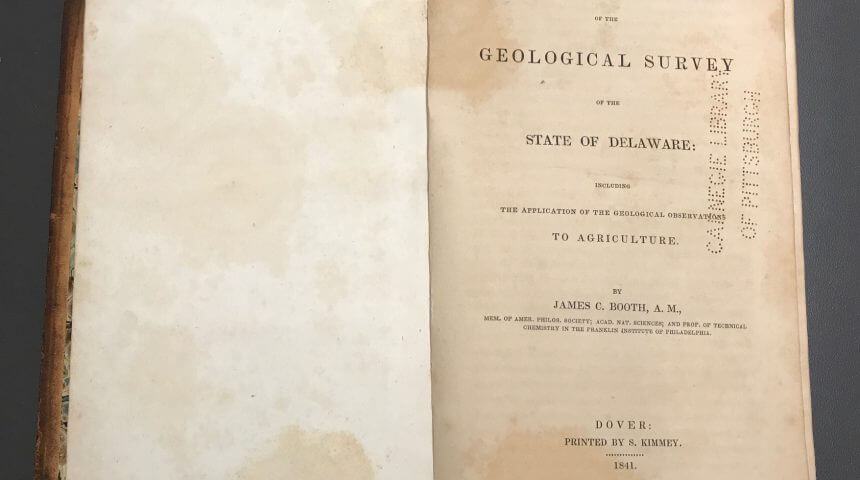
Here is a shell pattern end sheet with watery blue, earthy brown, and pale yellow mixed with white and dark browns. The shell pattern is made in a similar way that the stone pattern is created. This book is a geological survey of the state of Delaware from 1841, bound in a soft leather which appears to be extremely soft calfskin. It was not common to use calfskin to bind a geological survey; this binding seems a bit more upscale for some reason. A clue to this binding could be the manuscript writing in black ink on the title page “…from your friend, the author” suggesting that this item could have been given as a gift, which is perhaps why the binding was a bit fancier.
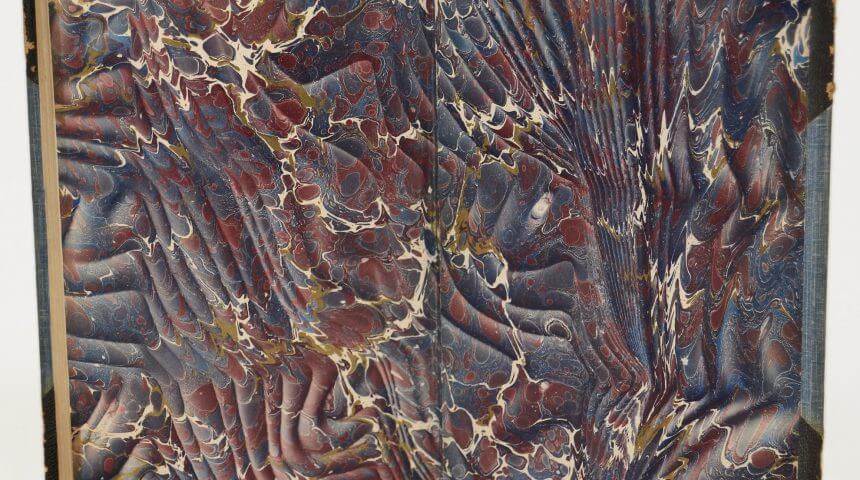
The pattern above is referred to as a Spanish marble, and more particularly could be a Spanish moire pattern. This paper decorates the inside cover of a book titled Marriage of the Bourbons from 1890. The binding is a blue linen bookcloth with leather spine and corners. The front cover design of CLP’s copy does not match the front cover design of the copies of the same book held by the University of Wisconsin – Madison & Harvard University. This suggests that this half style binding is not original. Why the choice of blue linen bookcloth, dark blue leather and then fantastic Spanish moire end sheets to replace the original dark blue bookcloth with a gold stamp of 2 crowns? No one knows for sure. Perhaps the original case had broken, and the blue linen bookcloth and marbled endsheets were the items available for the binder to use.
Scene 3. The Imposters
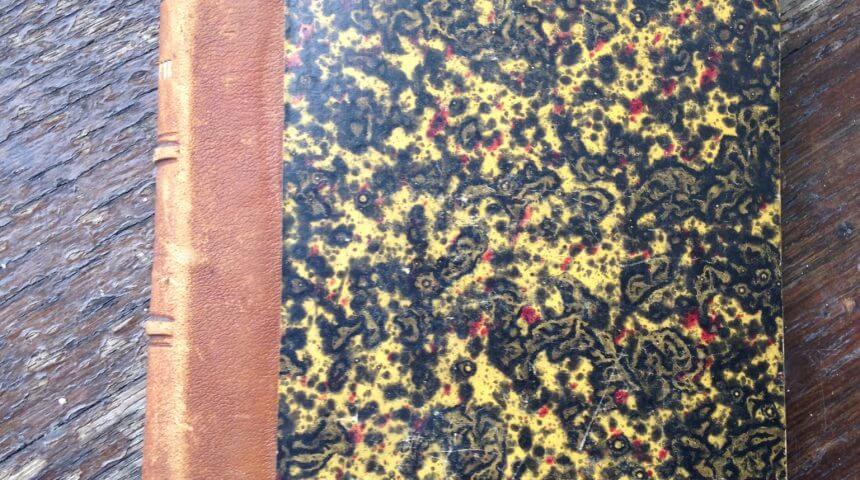
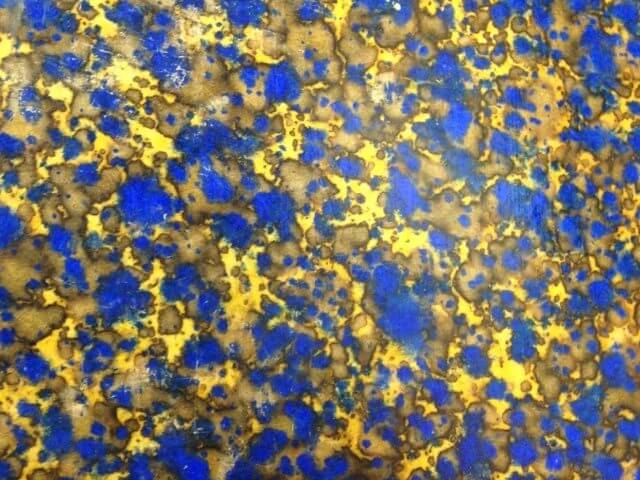
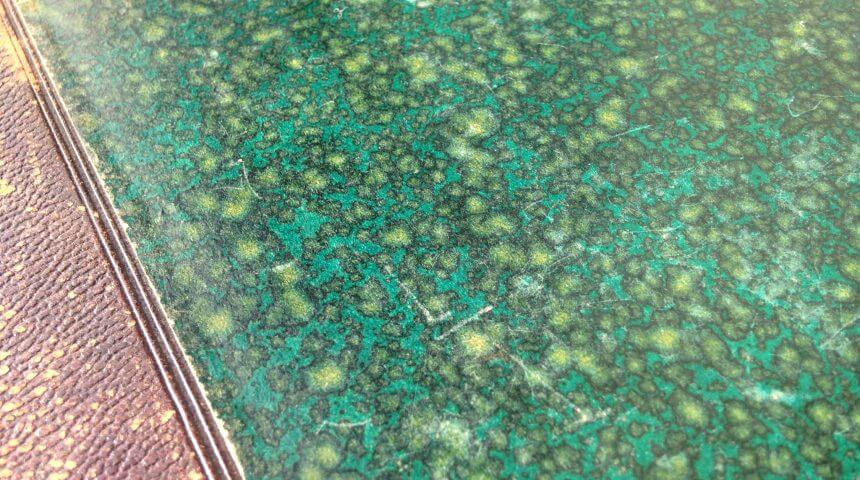
These are decorated papers that are referred to as “imitation” or “pseudo-marbled” papers. Imitation marbled papers, unlike true marbled papers, are not created in a bath. Most likely these patterns were created when a piece of paper was laid flat, one color was applied, and then brushes were used to sprinkle another color onto the surface, making spots across the paper.
Scene 4. Observations
From our selection of books, what can we determine?
- Do you think a considerable amount of time and design went into making marbled papers?
- Were some endsheets carefully chosen to match the color of the bookcloth or leather used in the binding?
- Are marbled endsheets something you see a lot of today when you visit your local library?
A book is a sound technology. It has been in use for thousands of years. The marbled paper, commonly encountered in libraries in the 1800s and early 1900s, has faded into a specialty use in the sphere of artists books, fine bindings and special collections. More commonly today, endpapers are blank or solid color. But, next time you check out a book from a local library, take a peak at the front and back – who knows, you could find some neat designs, or text or images that add another layer to the tale in the text block.
Resources & Further Reading
- The University of Washington University Libraries, hosts a website & database that showcases a selection of decorated and decorative papers produced between the 17th and 19th centuries: https://content.lib.washington.edu/dpweb/index.html
- A Brief History of Marbling: http://www.payhembury.com/Payhembury_Marbled_Papers/History_of_Marbling.html
- The Book Arts Web hosts a list of suppliers where you can purchase marbled papers: http://www.philobiblon.com/decoratedpaper.shtml
- Gallery of Book Cloth Grain Patterns: http://bindings.lib.ua.edu/gallery/grain.html
Links to resources does not equal an endorsement by the Carnegie Library of Pittsburgh.
-Amy W.

